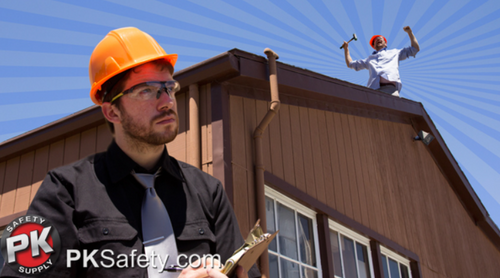Respirators Help Avoid OSHA Penalties
Number 4 on OSHA's Top 10 Most Frequently Cited Standards is Respiratory Protection. OSHA aims to control the occupational diseases and medical ailments caused by breathing air containing harmful "dusts, fogs, fumes, mists, gases, smokes, sprays, or vapors."
When permanent engineering solutions are not available to clear the air workers breath, ventilation systems or specific respirator masks need to be employed. Appropriate respirators must be provided to employees by the employer. That's from section 1910.134(a)(2) (if you're interested). Those respirators need to be suitable to protect worker's lungs against the hazards of the specific work site. That means the employer needs to know what dangers are present.
Here are a couple of common solutions to these problems:
First is the air-purifying respirator. These respirators create an air-tight seal on the face and users pull air through a filter, cartridge, or canister that removes air contaminants such as particles or vapors.
Atmosphere-supplying respirators bring clean air to the worker, or the worker carries a supply with them. Examples include supplied-air respirators (SAR) such as the Allegro 1-Worker Airline Respirator System which pumps air from a clean air environment through a hose into a mask the worker can wear in an area with contamination.
These SAR masks have some disadvantages - pulling a hose around, and limited range among them. But they also have tremendous upsides. The air is as clean as the area it is drawn from. It's also a positive-pressure system. Cartridges don't become overwhelmed, and filters don't become clogged.
For emergency situations, self-contained breathing apparatus (SCBA) allow workers or emergency responders to bring clean air with them into dangerous atmospheres. They are limited in their capacity and therefore their scope, but they do provide extreme mobility for the time allowed by the air in the tank. These tanks have a demand regulator which supplies air to the facepiece only when inhalation causes negative pressure within a mask. This serves to conserve and regulate the amount of air coming into the mask.
Another respirator that can be critical in some work environments is the escape-only respirator. These units are also called Emergency Escape Breathing Apparatus (EEBA) and are intended as a short-term, emergency exit breathing device (as the name might suggest).
Whichever solutions you choose, make sure it is appropriate to your work site and the dangers it contains. If you have questions about the appropriate solution to your site atmospheric challenges, please call us at 1-800-829-9580.
Recent Posts
-
Promoting Safety: National Work Zone Awareness Week is April 15-19, 2024
Each year, the National Work Zone Awareness Week (NWZAW) places the spotlight on the importance o …Apr 11th 2024 -
Understanding 4 Gas Monitors: How They Work & Why They Are Important
In today’s increasingly dynamic industrial landscape, 4 gas monitors have emerged as critical com …Apr 8th 2024 -
April Showers Require Workers to Wear Hi-Vis Safety Rain Gear
While April showers bring May flowers, they also bring challenges, particularly for those working …Apr 1st 2024





